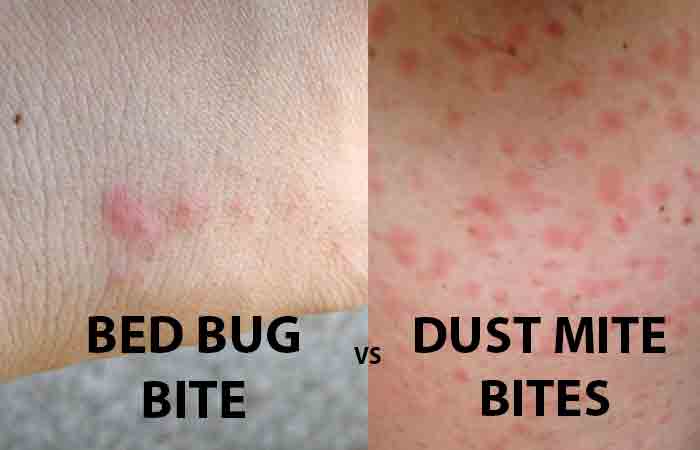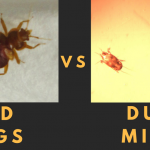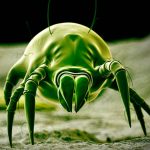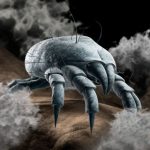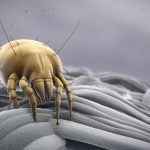What are dust mites and bed bugs? Some people think that both insects are one and the same. Well, they are not the same. There is also information about how dust mites and bed bugs bite. Well, technically, both insects do not bite. One of them sucks blood, and the other attaches itself to humans so that it can collect dead skin. This is how these insects thrive. Interested to know more? Read on and learn more about dust mites and bed bugs.
What Do Dust Mites Look Like?
Contents
- 1 What Do Dust Mites Look Like?
- 2 What Do Bed Bugs Look Like?
- 3 Why Do You Have Dust Mites In Your House?
- 4 How Do You Get Dust Mites?
- 5 Do Dust Mites Bite?
- 6 How Do You Know If You Have the Dust Mite Bites?
- 7 Dust Mite Bites vs. Bed Bug Bites
- 8 How To Treat Dust Mite Bites
- 9 How To Prevent Dust Mites
- 10 Final Words
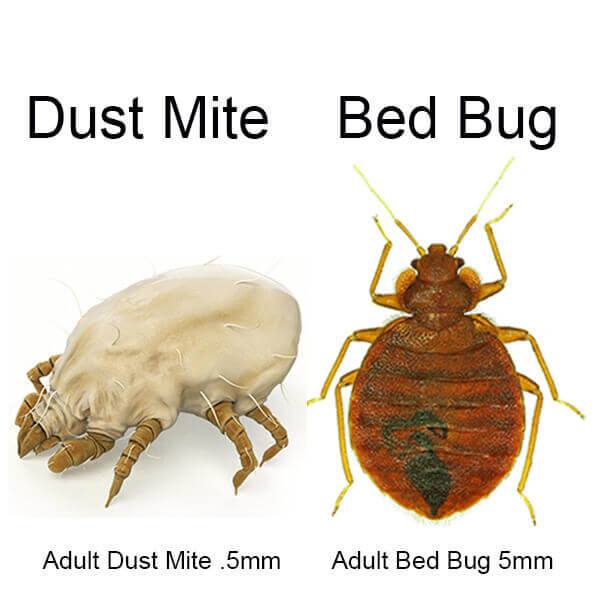
Dust mites are tiny microscopic bugs that the naked eye cannot see. They belong in the arthropod family and can cause significant discomfort to you and your kids at home. It is so tiny that a dust mite is only a fourth up to a third of a millimeter big. The period in this sentence might even be bigger!!! No wonder it cannot be seen, but dust mites can create so much distress for us.
Under the hand-held microscope, a dust mite will look like a tiny white spider. Their life span is not long since a male dust mite will only last for thirty days, and they die. Females, however, have a life span of up to ninety days. They are pests since they feed off of our dead skin cells. Dust mites, millions of them, thrive because of our 1.5-gram dead skin cells shed each day. They stay in our beddings, our couches, our carpets, our kids’ stuffed toys, and areas where dead skin cells may transfer. If you ever wonder why you have redness and itchiness, it could be due to dust mites.
What Do Bed Bugs Look Like?
Bed bugs are small insects, more like parasites. They need human or animal blood to thrive, and bed bugs have this flat, tiny, oval, and chocolate brown body that is as big as an apple seed. After sucking your blood, their bodies will expand and show a reddish-brown color. Bed bugs are not dust mites, and they bite. Their bite is not painful at first, but it will leave a swollen mark on your body.
Here are some signs that you have bed bugs in your room:
- You may see some small blood stains on your pillows, pillowcases, and blankets.
- You may see bed bug droppings left on your walls, your floors, and mattresses.
- Bed bugs’ skin is around your bed area. They change skin five times from nymph to adult bed bug. Before their change commences, the bed bugs need to feed well and be full.
- You may smell the musty bed bug odor.
Why Do You Have Dust Mites In Your House?
All homes have dust mites. It is inevitable. As to the severity of the infestation, this is where it will differ from one home to another. For example, a home with how humidity and dust mites will not survive long. But if your house is always moist, there will be a high concentration of dust mites lurking there. Do not worry. It can be reduced.
How Do You Get Dust Mites?
Dust mites are just “there” and existing in your home. As to the level of concentration, whether it is high or low, it will be determined by the house’s humidity. If the home is old, filled with mold and mildew, then dust mites are severe. They thrive in humid locations and easily cling to dust, fabrics, and the likes.
Do Dust Mites Bite?
Dust mites dn’t bite pets or humans. They do not prey on humans and suck their blood like other bugs and insects. But they need the dead skin cells that come from humans. This is why they thrive on anything they can cling to, especially on areas where skin may fall off. Dust mites can be found clinging on dust, on clothing, on your blankets, carpets, and the likes. The issue with dust mites is that it is an allergen, and for people who are allergic to it, dust mites can cause health complications. Contact with the dust mites can prove to be problematic.
It is called a chigger, the larva of dust mites, and it clings onto the body because of its dead skin cells. The chigger releases an enzyme while attached to the body and this digestive enzyme causes itchiness and allergies. At times, this will create some itchy bumps on the body or nasal and breathing issues. It can be so severe that the allergy can last for more than ten days if not treated immediately.
How Do You Know If You Have the Dust Mite Bites?
You will know if you have dust mites around with these symptoms:
- Constant sneezing
- Itching body
- Nasal congestion
- Runny nose
- Breathing problems
- Asthma (for severe patients)
Dust Mite Bites vs. Bed Bug Bites
Here are some differences between dust mites and bed bugs:
- Dust mites are ultra-small and cannot be seen by the naked eye. It is only up to .5mm big.
- Most dust mites are just .25mm in size, while bed bugs are visible to the naked eye. It is like a tiny apple seed and brown. The insect is usually flat.
- And yes, both are pests. Bed bugs are parasites, though, since they drink human and animal blood.
- Both insects live by your beddings.
- Bed bugs will bite and drink your blood, while dust mites do not bite. The latter need your skin, and it clings on to you to get your dead skin. It leaves an enzyme on you, which causes allergies. Both are pests indeed.
- Bed bugs will feed on you over and over again. Its bite will not be painful upon contact, but when it is done, the itchiness will start. On the other hand, dust mites attach to you and cause allergic reactions like runny nose, sneezing, nasal drip, coughing, and if it is severe, even asthma.
- Which one is more dangerous? I would say – DUST MITES.
How To Treat Dust Mite Bites
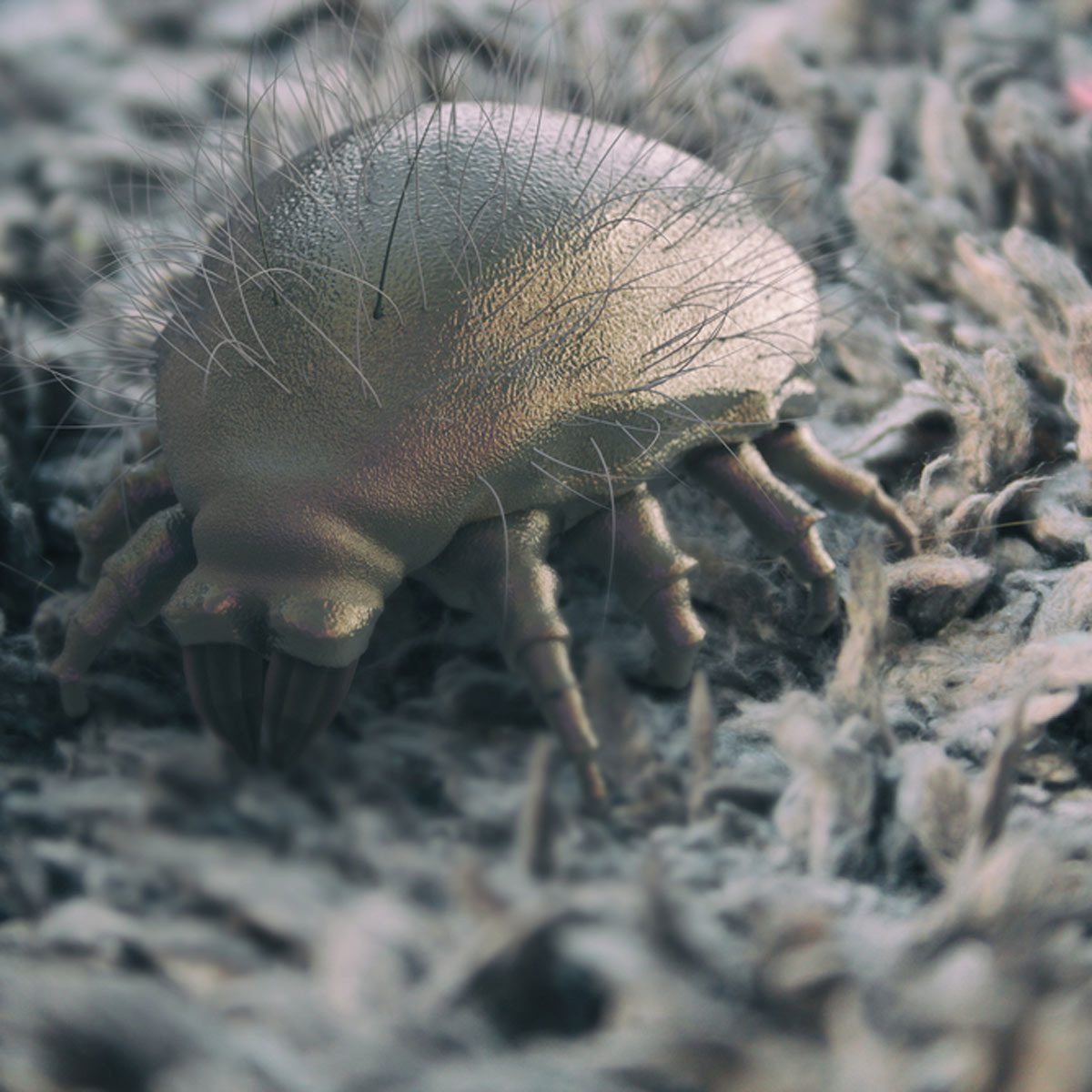
If you have been in contact with dust mites, you should do the following:
- Take a bath and lather your body with soap.
- Change your beddings to new sheets, and wash them thoroughly.
- If you have allergies due to dust mites, you can use topical anti-irritation creams.
- You can also take antihistamine medication.
- If the itchiness is too severe, use anesthetic creams instead of anti-itch creams.
- On the swollen areas, use an ice pack.
How To Prevent Dust Mites
Here are some things you can do to prevent a high concentration of dust mites in your homes:
- Use dust-proof beddings and pillowcases.
- Change beddings weekly. Wash it well.
- Maintain a low humidity level at home.
- Your kids’ stuffed toys should be washable.
- Clean your house regularly to avoid dust accumulation.
- Use a vacuum cleaner to clean your home and carpets.
- De-clutter and take out things not needed to avoid dust.
- If possible, use a different flooring aside from a carpeted floor.
- Install a filter system in your house.
Final Words
It is challenging to battle dust mites and bed bugs. These insects are small and are “there” however clean your house is. All you can do is apply preventive measures, follow the suggestions mentioned above, and clean, clean, and clean! That is all you can do. Since they thrive in unclean surroundings, dust mites, and bed bugs, it is better to be sanitary at home. If you have allergic reactions to bed bug bites or dust mite attachments, you can use creams and antihistamine treatment. If it becomes severe, go to your doctor immediately.
